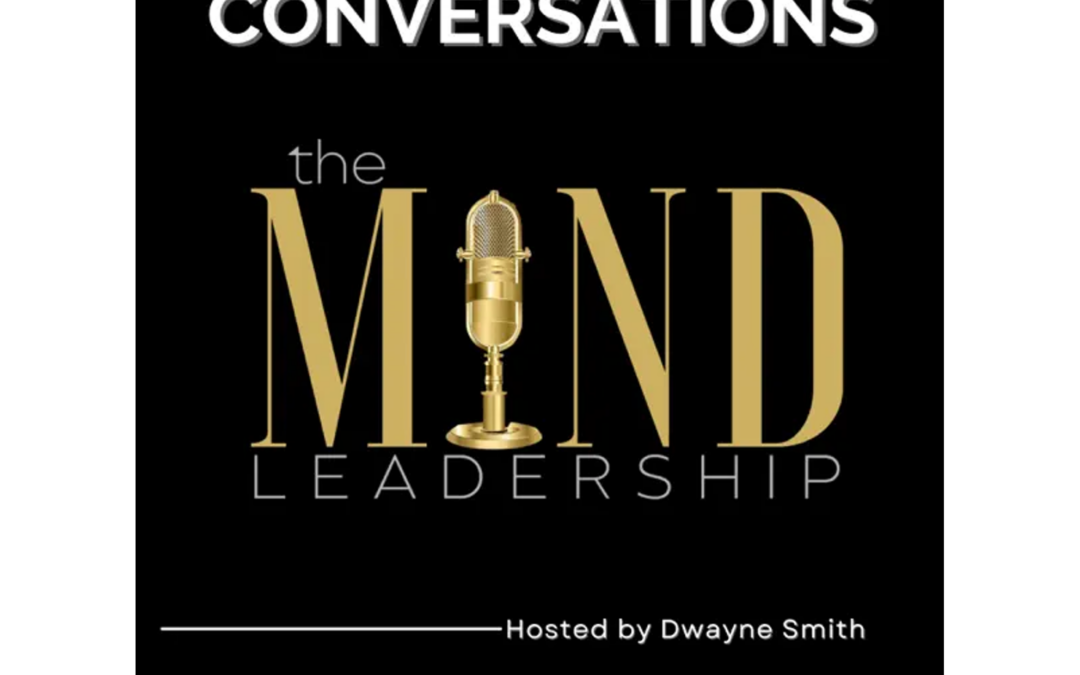
by Robyn Bolton | Dec 4, 2024 | Innovation, Just for Fun, Leadership, Metrics, Uncategorized
Last week, InnoLead published a collection of 11 articles describing the root causes and remedies for killers of innovation in large organizations. Every single article is worth a read as they’re all written by experts and practitioners whose work I admire.
I was also inspired.
In the spirit of the hustle and bustle of the holiday season, I gave into temptation, added my own failure mode, and decided to have a bit of fun.
The 12 Killers of Innovation
(Inspired by the 12 Days of Christmas yet relevant year-round)
On the twelfth day of innovating, management gave to me:
12 leaders short-term planning
11 long projects dragging
10 cultures resisting
9 decisions made too quickly
8 competing visions
7 goals left unclear
6 startups mistrusted
5 poorly defined risks
4 rigid structures
3 funding black holes
2 teams under-staffed
And a bureaucracy too entrenched to change
Want to write a happier song?
Each of the innovation killers can be fended off with enough planning, collaboration, and commitment. To learn how, check out the articles:
12 leaders short-term planning – Why Innovation is a Leadership Problem by Robyn Bolton, MileZero
11 long projects dragging – Failing Slow by Clay Maxwell, Peer Insight
10 cultures resisting – How to Innovate When Resistance is Everywhere by Trevor Anulewicz, NTT DATA
9 decisions made too quickly – Red Light, Green Light by Doug Williams, SmartOrg Inc.
8 competing visions – The Five Most Common Innovation Failure Modes by Parker Lee, Territory Global
7 goals left unclear – Mitigating Common Failure Modes by Jim Bodio, BRI Associates
6 startups mistrusted – Developing a New Corporate Innovation Model by Satish Rao, Newlab
5 poorly defined risks – Strategic Innovation is too Scary by Gina O’Connor, Babson College
4 rigid structures – Corporate Innovation is Dead by Ryan Larcom, High Alpha Innovation
3 funding black holes – Failure Modes by Jake Miller, The Engineered Innovation Group
2 teams under-staffed – Why Innovation Teams Fail by Jacob Dutton, Future Foundry
And a bureaucracy too entrenched to change – Building Resilient Teams by Frank Henningsen, HYPE Innovation
How are you going to make sure that you receive gifts and not coal this year for all your innovation work?

by Robyn Bolton | Nov 27, 2024 | Podcasts

by Robyn Bolton | Nov 19, 2024 | Innovation, Leadership, Tips, Tricks, & Tools
“We identified four opportunities for market expansion, all adjacent to our current business, and entry into any one of them is almost guaranteed to materially grow our business. But no one is doing anything.”
I wanted to be surprised. Instead, I sighed and asked the question I knew he couldn’t answer.
“What are your colleagues afraid of?”
The Four Horsemen of the Apocalypse
Most of the time, when opportunities are clear, but action is absent, it’s because one of the first three horsemen of the innovation apocalypse appeared:
- Short-termism: “The CFO is worried we may miss the quarter, so we’re starting to make cuts.”
- Size: “We have a new President coming in who wants to put his stamp on things, so he’s cutting anything that won’t double out business in three years.”
- Scarcity: “We’re implementing a new process, and this would just be one thing too many for people to handle.”
The business my client described has doubled in the past five years. After fifty years of steady, reliable, and predictable revenue, its top line suddenly became the mythical “hockey stick of growth.” The technological driver of this change is more likely to be the “new normal” than a fad, so the business is expected to double again in the next five years.
Leadership isn’t worried about delivering the next quarter, year, or five years. They know that they have the resources they need and can access more when the time is right. They’re confident that the opportunities identified are feasible and meaningful.
Yet, they will not act.
I’m not afraid. I’m biased!
Behavioral economists, psychologists, and sociologists explain situations like the above by pointing out our “cognitive biases”—the “irrational errors that are programmed into our brains.” For example, the first three horsemen could be known as Present Bias, the hard-easy effect, and Loss Aversion.
As of 2024, over 150 cognitive biases have been identified.
While it’s comforting to blame programming bugs beyond our awareness and control for our “irrational errors,” this approach lets us off the hook a bit too easily.
I’m not biased. I’m afraid!
Fear is at the root of most, if not all, of these biases because emotions, not programming bugs in our brains, drive our decisions.
The study of how our emotions impact decision-making didn’t take off until the early 2000s. It really accelerated in 2015 when professors from Harvard, UC Riverside, Claremont McKenna College, and Carnegie Mellon published a meta-study on the topic and declared:
The research reveals that emotions constitute potent, pervasive, predictable, sometimes harmful and sometimes beneficial drivers of decision making. Across different domains, important regularities appear in the mechanisms through which emotions influence judgments and choices.
Bottom line – we decide with our hearts and justify with our heads.
Our hearts are afraid that we’ll lose the respect of our peers and loved ones, the reputations we’ve worked decades to build, the physical goods and intangible experiences that project our societal status, or the financial safety of a regular paycheck.
And, as my brilliant and kind sister told me, “These feelings we feel, these feelings are real.”
I’m afraid and biased and brave!
Next time you see someone (maybe you?) do something “irrational,” get curious and ask:
- What cognitive bias are they falling prey to?
- What is the fear that’s driving that bias?
- How can you help them to be brave, live with the fear, and move forward?
I’m curious…when was the last time you were afraid, biased, and brave?

by Robyn Bolton | Nov 12, 2024 | Customer Centricity, Leadership, Stories & Examples
“Now I know why our researchers are so sad.”
Teaching at The Massachusetts College of Art and Design (MassArt) offers a unique perspective. By day, I engage with seasoned business professionals. By night, I interact with budding designers and artists, each group bringing vastly different experiences to the table.
Customer-centricity is the hill I will die on…
In my Product Innovation Lab course, students learn the innovation process and work in small teams to apply those lessons to the products they create.
We spend the first quarter of the course to problem-finding. It’s excruciating for everyone. Like their counterparts in business and engineering, they’re bursting with ideas, and they hate being slowed down. Despite data proving that poor product-market fit a leading cause of start-up failure and that 54% of innovations launched by big companies fail to reach $1M in sales (a paltry number given the scale of surveyed companies), they’re convinced their ideas are flawless.
We spend two weeks exploring Jobs to be Done and practicing interviewing techniques. But their first conversations sound more like interrogations than anything we did in class.
They return from their interviews and share what they learned. After each insight, I ask, “Why is that?” or “Why is that important?
Amazingly, they have answers.
While their first conversations were interrogations, once the nervousness fades, they remember their training, engage in conversations, and discover surprising and wonderful answers.
Yet the still prioritize the answers to “What” over answers to “Why?”
…Because it’s the hill that will kill me.
Every year, this cycle repeats. This year, I finally asked why, after weeks of learning that the answers to What questions are almost always wrong and Why questions are the only path to the right answers (and differentiated solutions with a sustainable competitive advantage), why do they still prioritize the What answers?
The answer was a dagger to my heart.
“That’s what the boss wants to know,” a student explained. “Bosses just want to know what we need to build so they can tell engineering what to make. They don’t care why we should make it or whether it’s different. In fact, it’s better if it’s not different.”
I tried to stay professional, but there was definitely a sarcastic tone when I asked how that was working.
“We haven’t launched anything in 18 months because no one likes what we build. We spend months on prototypes, show them to users, and they hate it. Then, when we ask the researchers to do more research because their last insights were wrong, they get all cra….OOOOHHHHHHHH…..”
(insert clouds parting, beams of sunlight shining down, and a choir of angels here)
“That’s why the researchers are so sad all the time! They always try to tell us the “Whys” behind the “Whats” but no one wants to hear it. We just want to know what to build to get to work. But we could create something people love if we understood why today’s things don’t work!”
Honestly, I didn’t know whether to drop the mic in triumph or flip the table in rage.
Ignorance may be bliss but obsolesce is not
It’s easy to ignore customers.
To send them surveys with pre-approved answers choices that can be quickly analyzed and neatly presented to management. To build exactly what customers tell you to build, even though you’re the expert on what’s possible and they only know what’s needed.
It’s easy to point to the surveys and prototypes and claim you are customer-centric. If only the customers would cooperate.
It’s much harder to listen to customers. To ask questions, listen to answers you don’t want to hear, and repeat those answers to more powerful people who want to hear them even less. To have the courage to share rough prototypes and to take the time to be curious when customers call them ugly.
So, if you want to be happy, keep pretending to care about your customers.
Pretty soon, you won’t have any left to bother you.

by Robyn Bolton | Nov 6, 2024 | Leadership, Tips, Tricks, & Tools
Corporate offsites – the phrase conjures images of everything from “mandatory fun” with colleagues to long and exhausting days debating strategy with peers. Rarely are the images something that entice people to sit up and shout, “YEA!” But what if the reality could be something YEA! worthy?
That’s exactly what the authors of the recent HBR article, “Why Offsites Work – and How to Get the Most Out of Them,” describe and offer a guide to accomplish.
Offsites May Be the Answer to the WFH vs. RTO Debate
Offsites aren’t new but they’ve taken on a new role and new significance as companies grapple with how to manage Work from Home (WFH) and Return To Office (RTO) policies.
As with most things in life, the pendulum swings from one extreme to another until eventually, finally, landing in a stable and neutral midpoint. When the pandemic hit, we swung from every day in the office to every day at home. Then society opened back up and corporate landlords came calling for rent, whether or not people were in the offices, so we swung back to Return to Office mandates.
Offsites, the authors suggest, may be the happy medium between the two extremes because offsites:
“give people opportunities for interactions that otherwise might not happen. Offsites create unique opportunities for employees to connect in person, forming new relationships and strengthening existing ones. As a result, offsites help people learn about others’ knowledge and build interpersonal trust, which are both critical ingredients for effective collaboration.”
Offsite Connections Lead to Collaborations that Generate ROI
After analyzing eight years of data from a global firm’s offsites and 350,000 “instances of formal working relationships” for 750 employees, the authors found that intentionally designed offsites (more on that in a moment) yield surprisingly measurable and lasting results:
- 24% more incoming requests for collaboration amongst attendees post vs. pre-offsite (silos busted!)
- 17% of new connections were still active two years after the offsite (lasting change!)
- $180,000 in net new revenue from collaborations within the first two months post offsite (real results!)
The benefits event extended to non-attendees because they “seemed to get the message that collaboration is important and wanted to demonstrate their commitment to being collaborative team players” and “likely identified new collaborators after the offsite through referrals.”
How to Design Offsites That Get Results
Four key strategies emerged from the authors’ research and work with over 100 other organizations:
- Design for the people in the audience, not the people on stage. Poll attendees to understand their specific needs and goals, then design collaborative activities, not management monologues.
- Design for the new hires, not the tenured execs. Create opportunities for new hires to meet, connect with, and work alongside more experienced colleagues.
- Set and communicate clear goals and expectations. Once the offsite is designed and before it happens, tell people what to expect (the agenda) and why to expect it (your design intentions and goals). Also, tell them how to make the most of the offsite opportunities by thinking about the skill and network gaps they want to fill.
- Track activities to measure ROI. The connections, collaborations, and commitments that start at the offsite need to continue after it in the form of ongoing communication, greater collaboration, and talent engagement. Yes, conduct a post-event survey immediately after the event but keep measuring every 2-3 months until the next offsite. The data will reveal how well you performed against your goals and how to do even better the next time.
Offsites can be a powerful tool to build an organization’s culture and revenue, but only if they are thoughtfully designed to go beyond swanky settings, sermons from the stage, and dust-collecting swag and build the connections and collaborations that only start when people are together, in-person, outside of the office.




